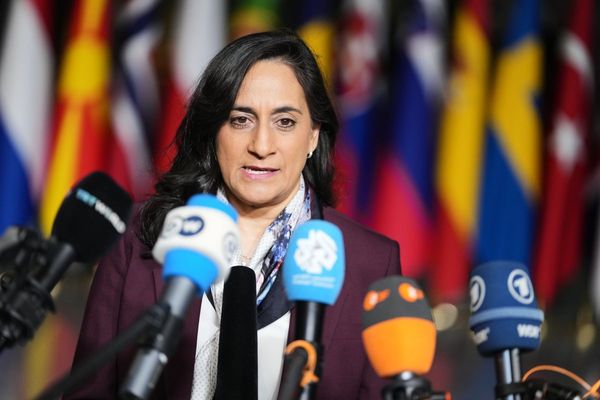
A startup created by Google parent company Alphabet (NASDAQ:GOOG, GOOGL)) is stepping into the broadband spotlight as it goes after a share of the federal government's $42.5 billion Broadband Equity Access and Deployment program. The company, Taara, says in a blog post that its wireless Lightbridge technology can beam high-speed internet over the air, offering an alternative to both fiber and satellite options.
Taara has stated on X that it is “BEAD-ready,” referencing the initiative backed by the U.S. government. The post followed a major revision to the BEAD rules by the Department of Commerce's National Telecommunications and Information Administration announced in early June, which now encourages technology neutrality rather than prioritizing traditional gigabit fiber. That change gives companies like Taara a chance to compete directly with Elon Musk's Starlink and T-Mobile's (NASDAQ:TMUS) 5G Home Internet for funding.
Don't Miss:
- If You're Age 35, 50, or 60: Here’s How Much You Should Have Saved Vs. Invested By Now
- $100k+ in investable assets? Match with a fiduciary advisor for free to learn how you can maximize your retirement and save on taxes – no cost, no obligation.
Commerce Secretary Howard Lutnick said in the announcement that the revised BEAD guidelines reflect a shift toward technology neutrality, aiming to deliver high-speed internet more efficiently and cost-effectively without prioritizing any single approach.
Alphabet's Taara Targets the Broadband Dead Zone Starlink Can't Reach
Taara is led by Mahesh Krishnaswamy, a former Apple (NASDAQ:AAPL) and Google engineer who spun the project out of Alphabet's X moonshot factory after working on its earlier initiative, Loon. He has been focused on bridging global connectivity gaps since his early days in Chennai, India. "Today, there are like 3 billion people still unconnected, and there is a dire need to bring them online," Krishnaswamy told Wired. His mission, he says, is to find scalable ways to bring high-speed internet to the places the fiber can't reach.
Rather than laying cable underground or relying on orbiting satellites, Taara says it uses devices installed on towers to send internet signals through the air across distances of up to 20 kilometers. The company positions this technology as a solution to the "middle mile" infrastructure gap, which connects the main internet backbone to local delivery systems like fiber or 5G towers.
Trending: Named a TIME Best Invention and Backed by 5,000+ Users, Kara's Air-to-Water Pod Cuts Plastic and Costs — And You Can Invest At Just $6.37/Share
According to Taara, this part of the network is especially crucial in remote and challenging environments, where last-mile connections often remain isolated without an efficient link to the larger grid. "Without it, even the last-mile fiber connections or 5G cell towers remain stranded, unable to reach the broader internet," the company wrote in a LinkedIn post.
Alphabet’s GFiber says Taara’s Lightbridge can deliver speeds of up to 20 Gbps with ultra-low latency and no packet loss under clear weather conditions. This was demonstrated during a test in San Francisco with GFiber, which reported performance that matched high-end wired networks and exceeded traditional wireless radio systems.
See Also: This AI-Powered Trading Platform Has 5,000+ Users, 27 Pending Patents, and a $43.97M Valuation — You Can Become an Investor for Just $500.25
Digicomm Deal Signals Taara's Play for Scaled, High-Speed Wireless Internet
In May, Taara partnered with Digicomm International, a major telecom equipment supplier, to help deploy its Lightbridge system at scale. Digicomm announced that it will deliver Taara’s Lightbridge to broadband providers, businesses, and municipalities seeking fast, high-capacity wireless internet.
Wired describes Taara as a high-speed, earthbound alternative to Starlink, one that's already shown success at events like Coachella and in cities where laying fiber is cost-prohibitive. Whether the federal government will see Lightbridge as a worthy investment remains to be seen, but Alphabet is clearly placing a bet on the future of middle-mile infrastructure.
Read Next: Are you rich? Here’s what Americans think you need to be considered wealthy.
Image: Shutterstock







